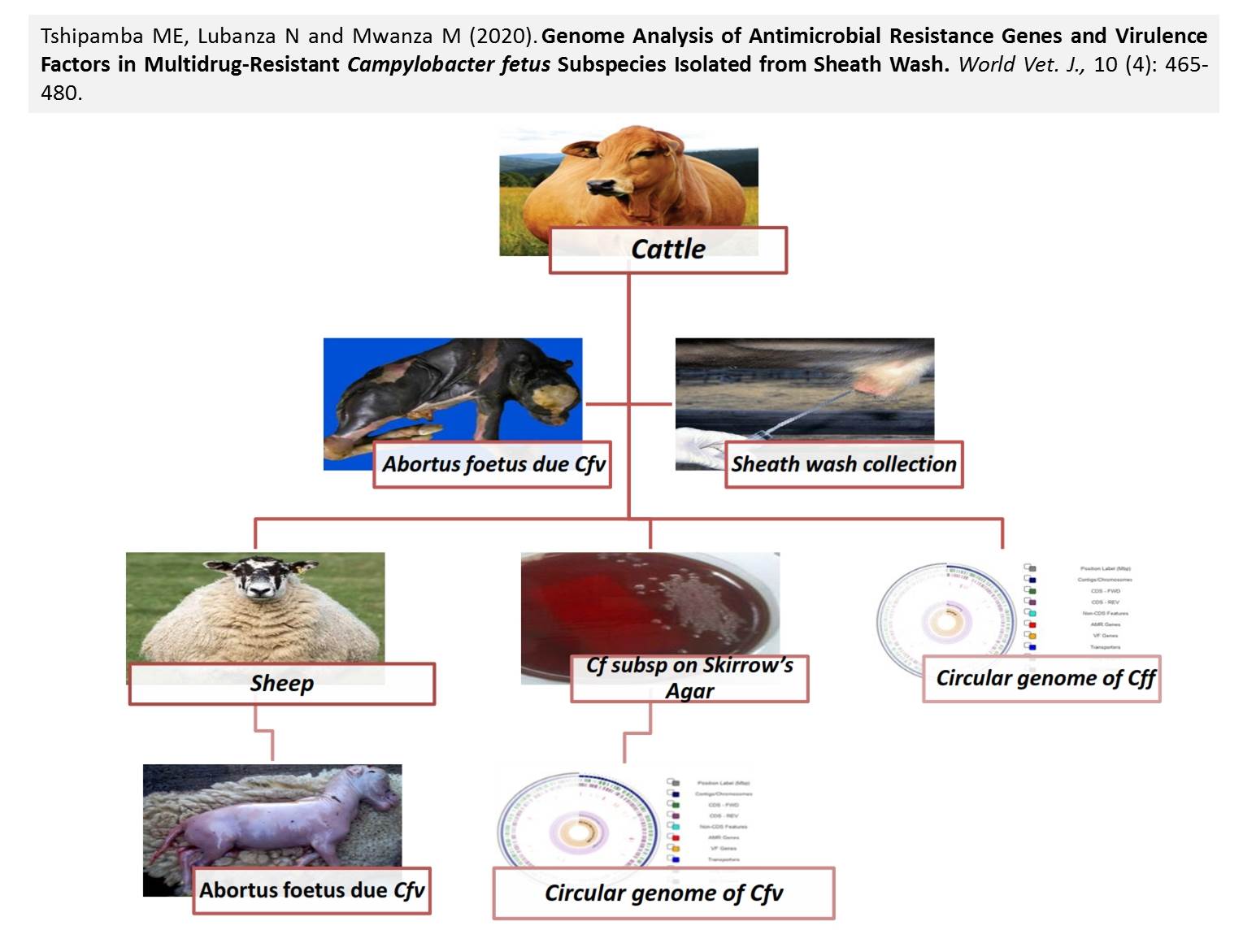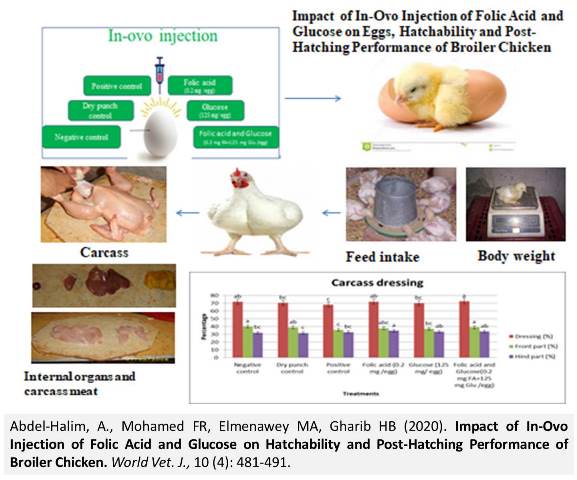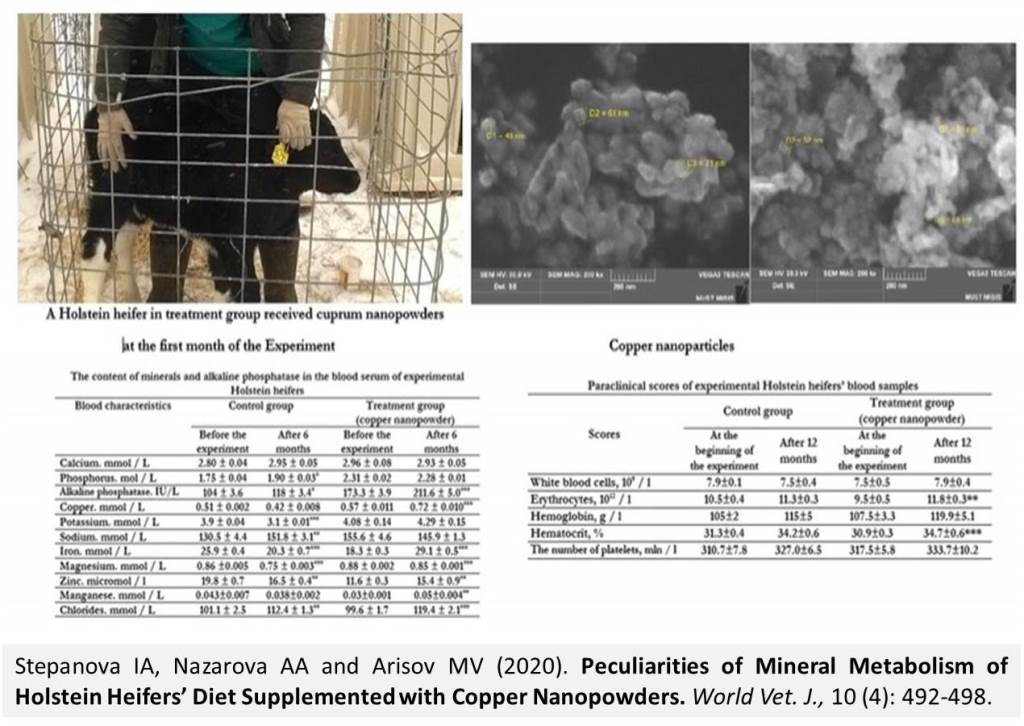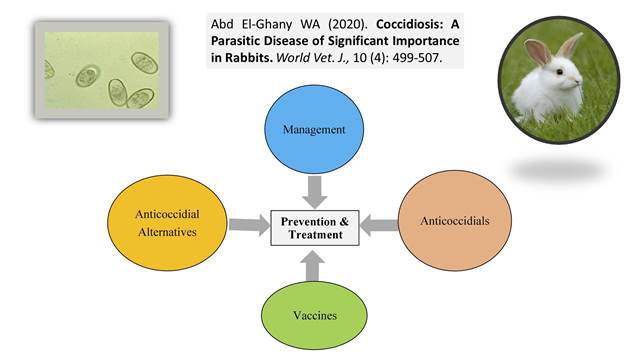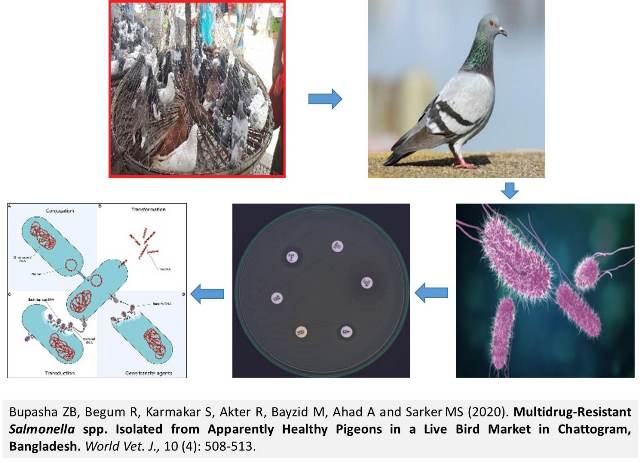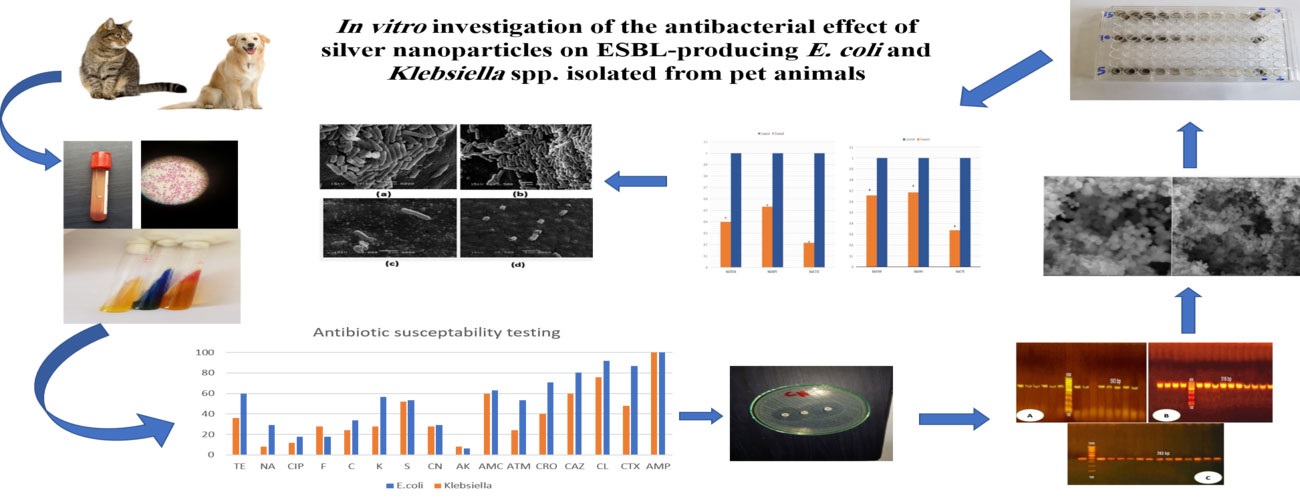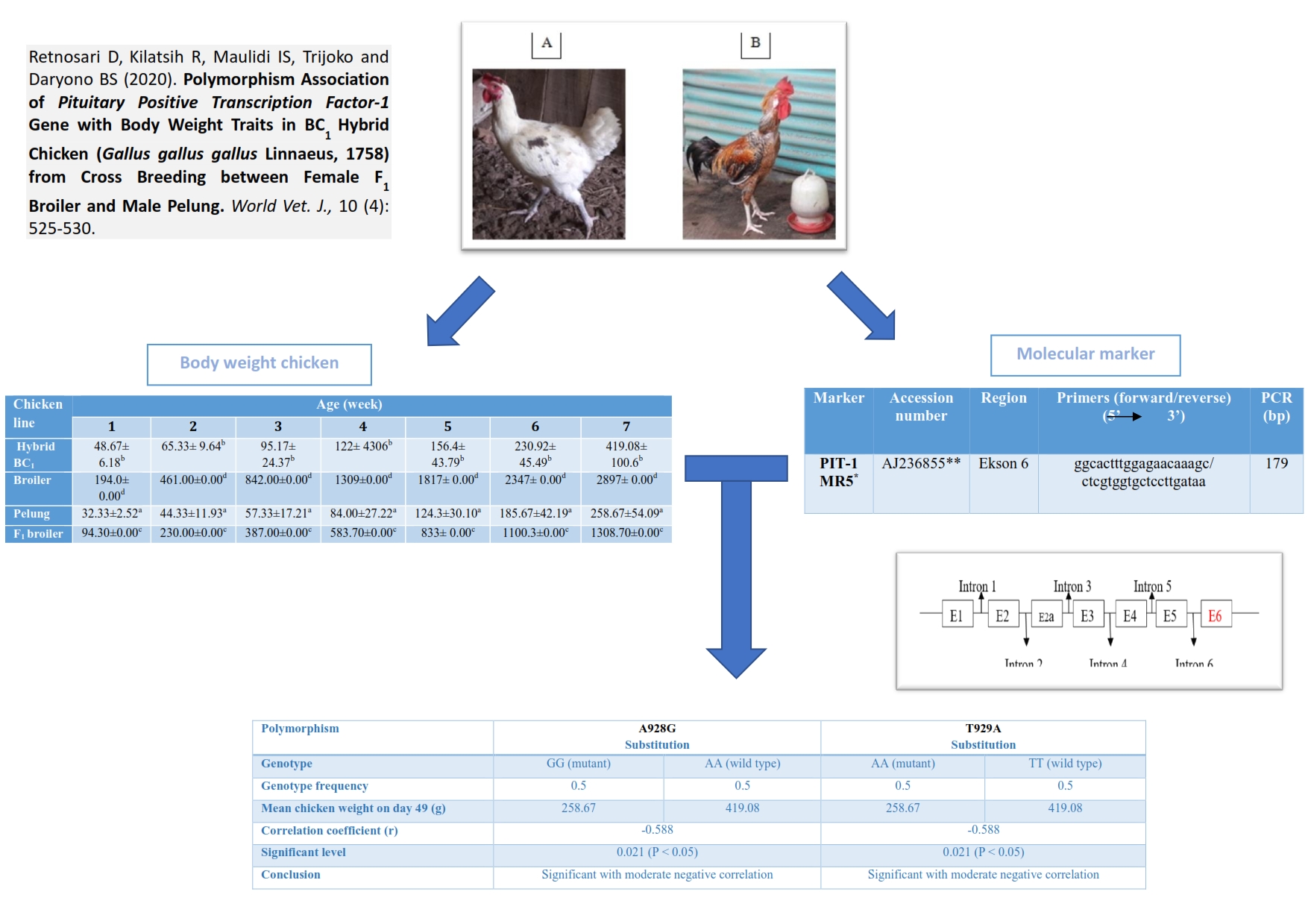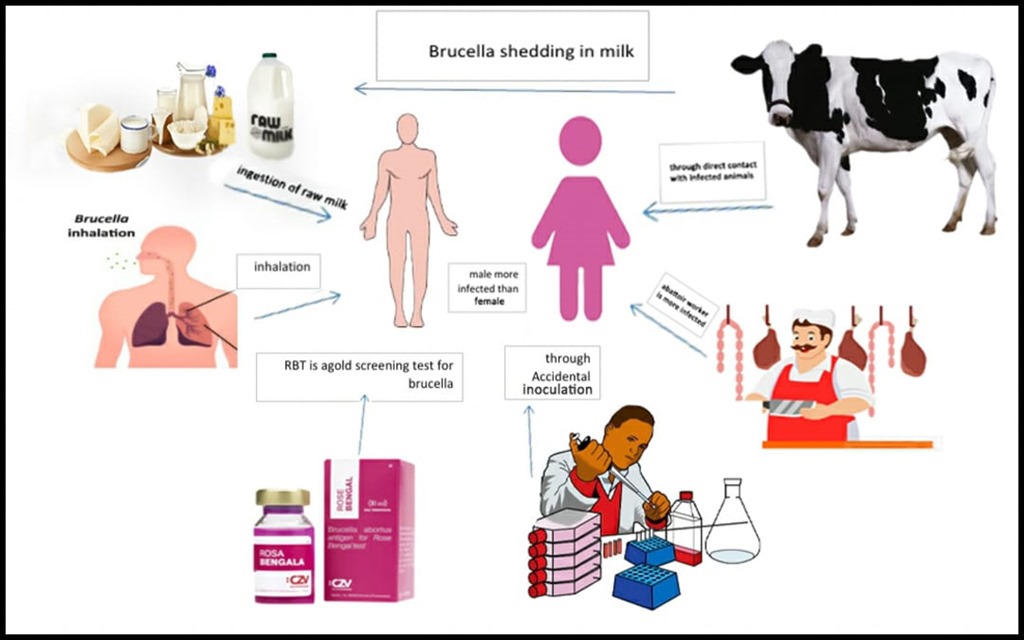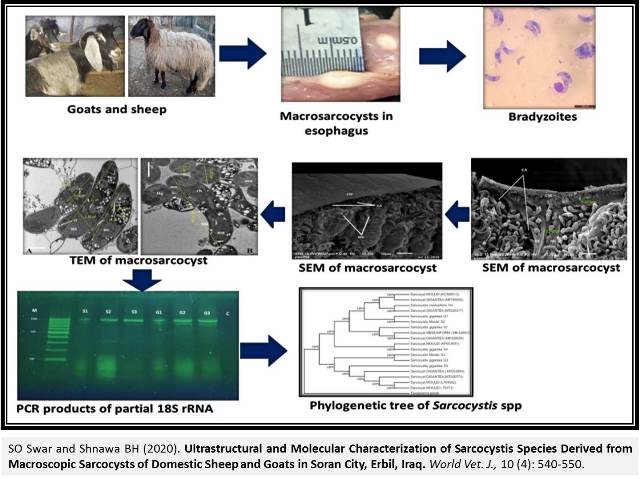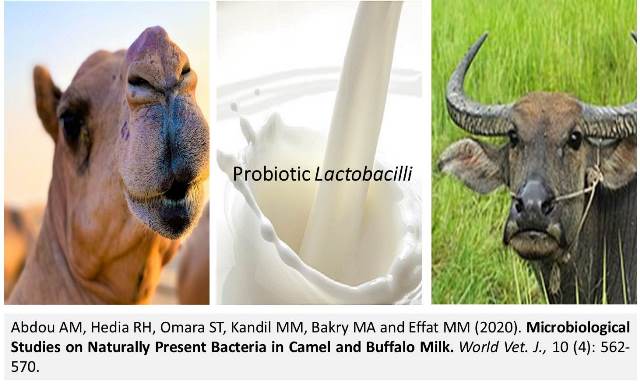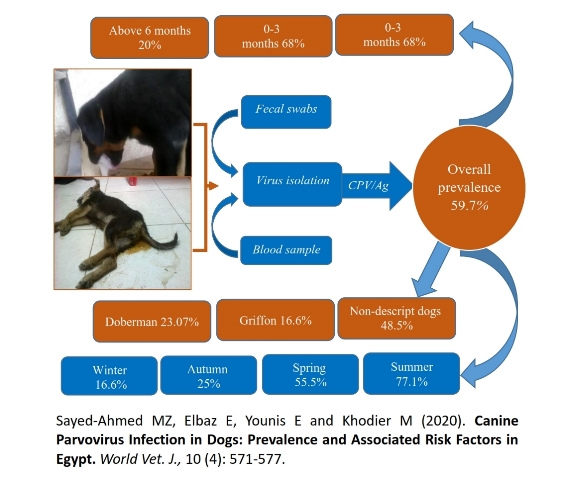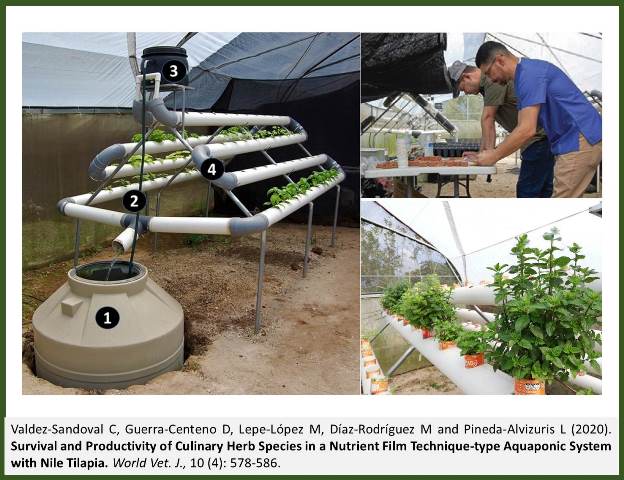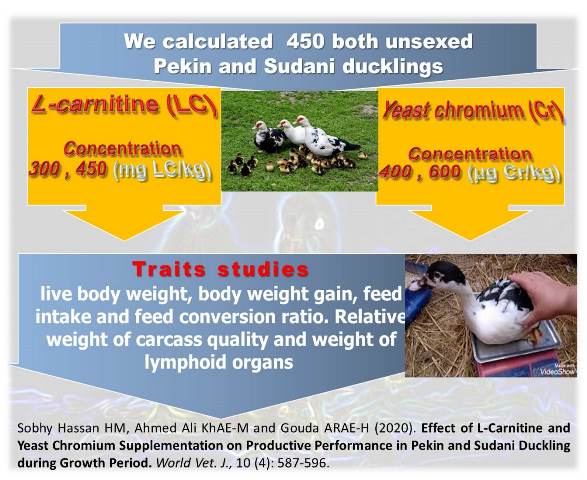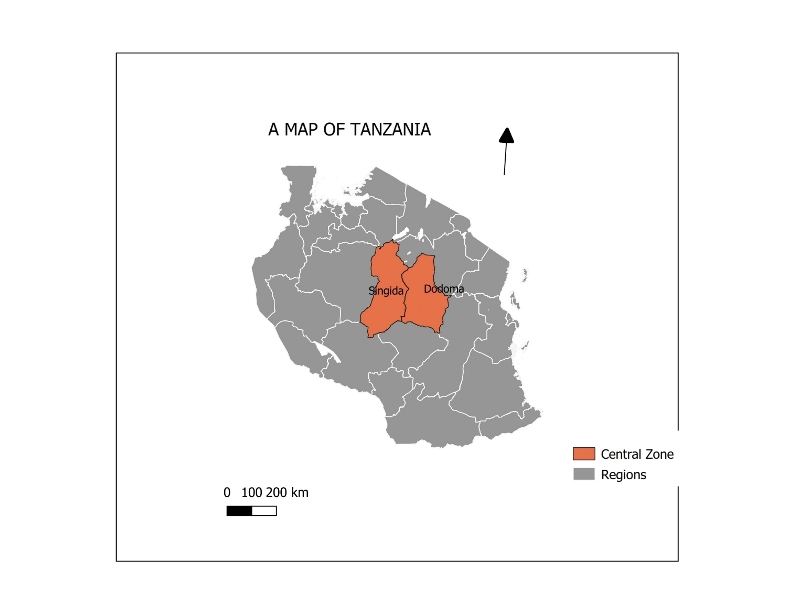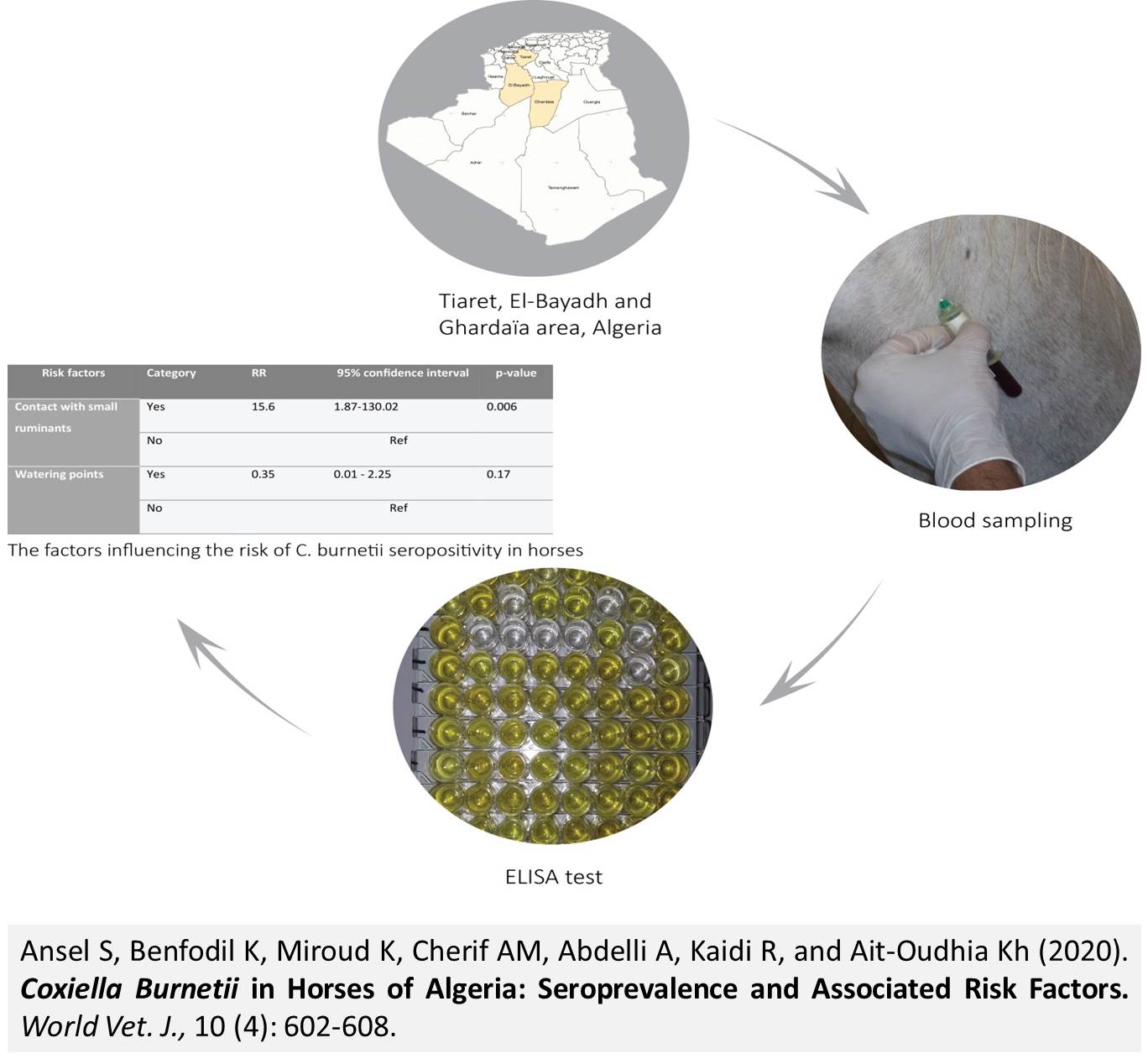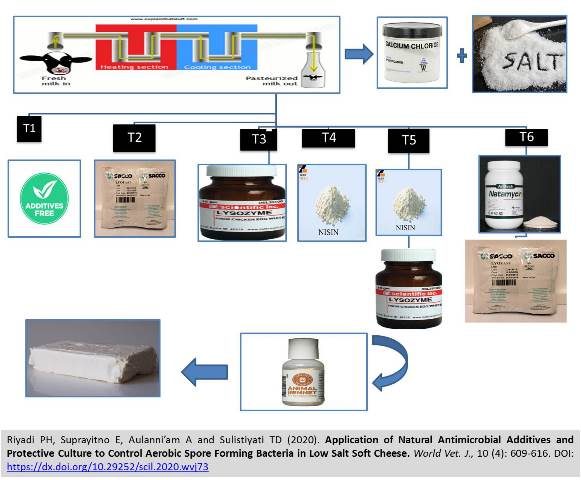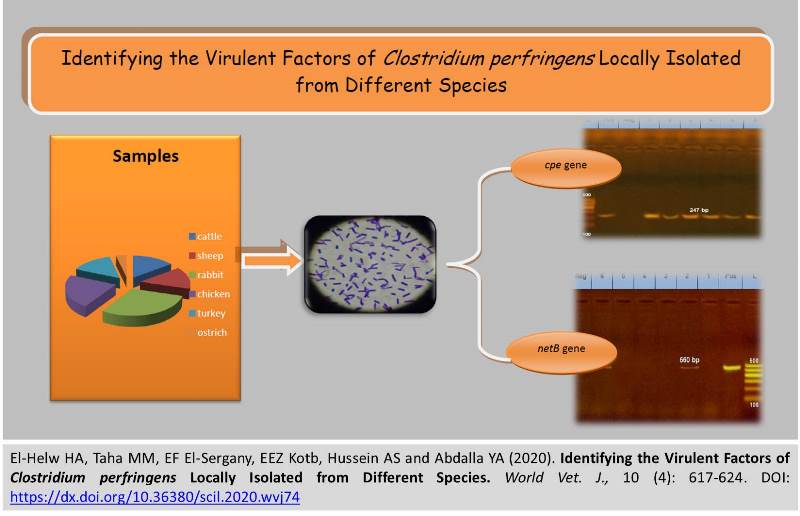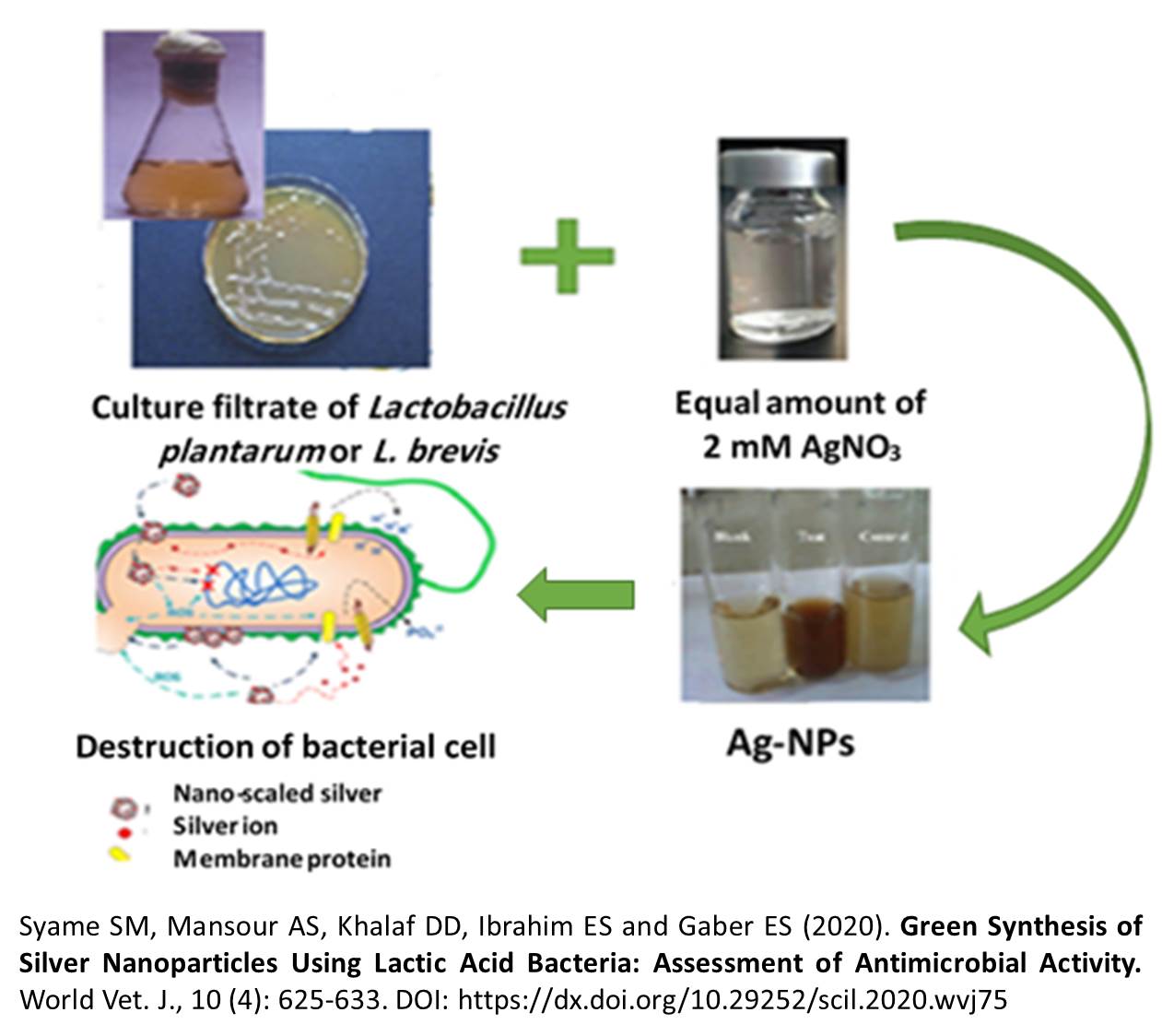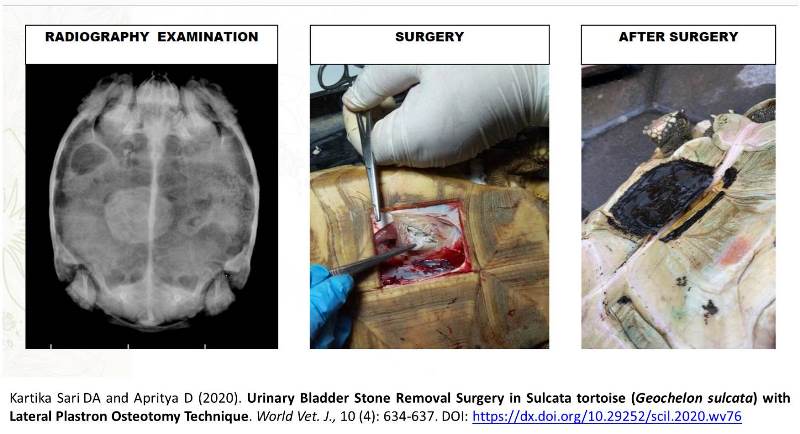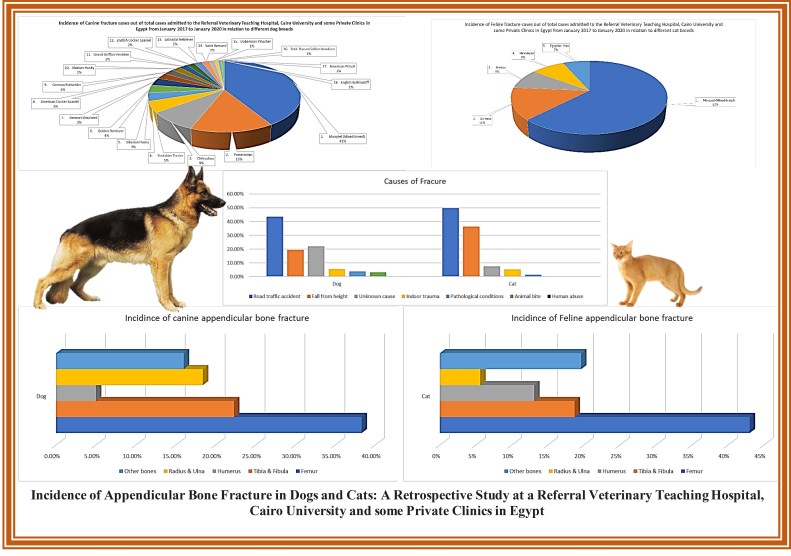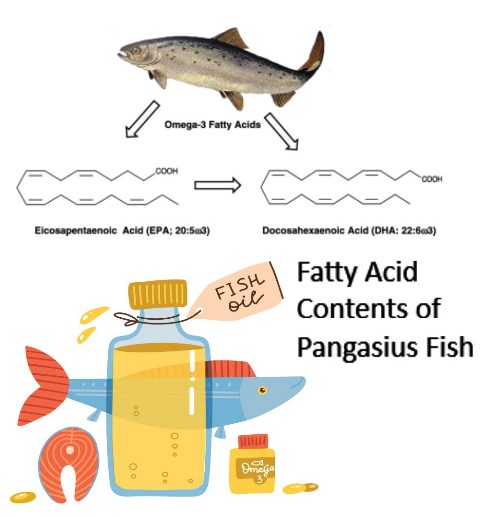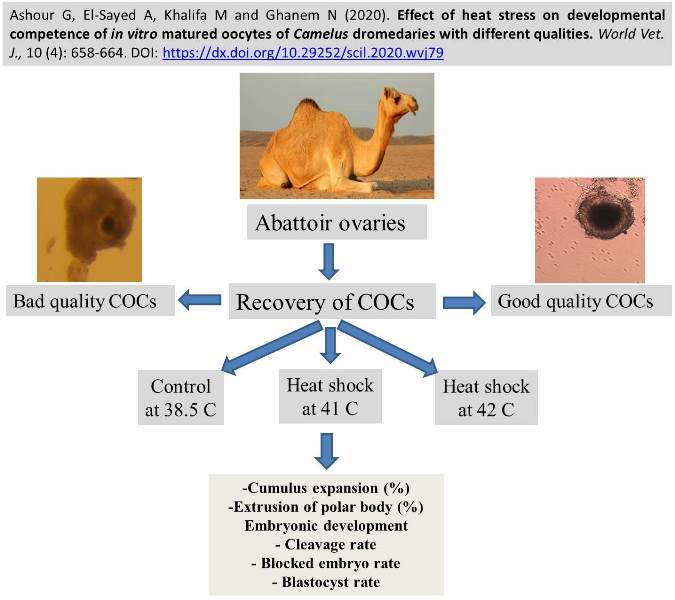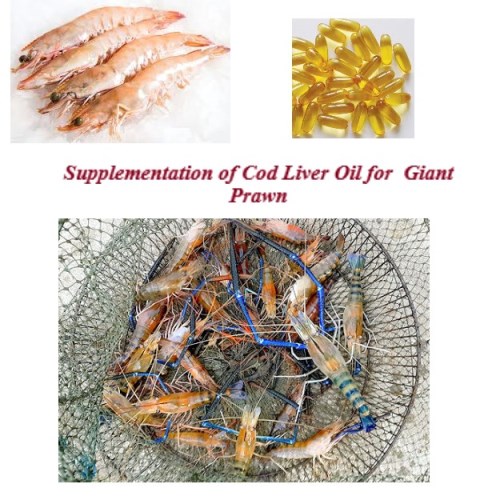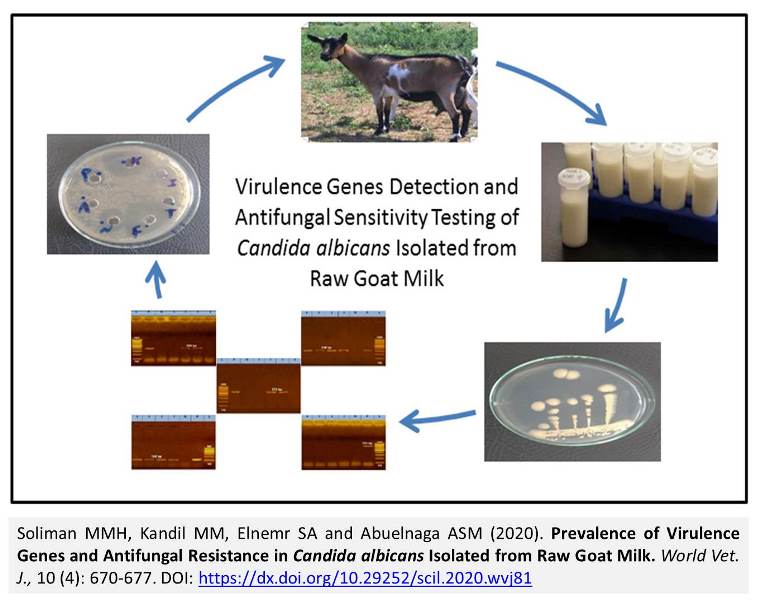Previous issue | Next issue | Archive
![]() Volume 10 (4); December 25, 2020 [Booklet] [EndNote XML for Agris]
Volume 10 (4); December 25, 2020 [Booklet] [EndNote XML for Agris]
Genome Analysis of Antimicrobial Resistance Genes and Virulence Factors in Multidrug-Resistant Campylobacter fetus Subspecies Isolated from Sheath Wash
Tshipamba ME, Lubanza N and Mwanza M.
World Vet. J. 10(4): 465-480, 2020; pii:S232245682000057-1-10; DOI:https://dx.doi.org/10.54203/scil.2020.wvj57
ABSTRACT: Campylobacter fetus subspecies are mostly characterized by reproductions problems in cattle and sheep. This study aimed to study the genetic profile and assess the genes mechanism of resistance and their virulence factors using genome sequence analysis. A total of 59 confirmed Campylobacter fetus subspecies based on molecular assays and DNA sequencing were subjected to antimicrobial susceptibility test against 14 antibiotic agents representing the five classes of antibiotics using the disc diffusion method. In addition, sequencing the genome of all strains induced complete resistance against all tested antibiotics. The results of the antimicrobial test indicated that 54.4% had a resistance profile, 26.3% were intermediate, while 19.3% were observed to be susceptible. The Whole Genome Sequencing (WGS) result revealed the presence of different genes, such as Broad-specificity multidrug efflux pump and 16S rRNA (guanine527-N7)-methyltransferase (gidB), efflux pump conferring antibiotic resistance (MacA and MacB), protein-altering cell wall charge conferring antibiotic resistance (PgsA), which have never been reported in Campylobacter fetus subspecies. The WGS also revealed the presence of genes that involved in colonization, adhesion, motility, and invasion, such as type IV secretion system protein (VirD4), S-Layer, cytolethal distending toxin (A, B, and C), Campylobacter invasion antigen (CiaB), and fic domain protein (fic) were among important CDS. The presence of these uncommon genes explains the resistance of Campylobacter fetus subspecies against different tested antibiotics. The results of this study can be used to implement molecular surveillance of Campylobacter fetus subspecies and conduct further studies on the resistance mechanism in these subspecies.
Keywords: Broad-specificity multidrug efflux pump, Campylobacter fetus subspecies, Genome analysis, Methyltransferase gidB, Multidrug resistance.
[Full text-PDF] [XML] [Google Scholar] [Crossref Metadata] [Scopus] [Export from ePrint] [How to Cite]
Research Paper
Impact of In-Ovo Injection of Folic Acid and Glucose on Hatchability and Post-Hatching Performance of Broiler Chicken
Abdel-Halim A, Mohamed FR, Elmenawey MA, Gharib HB.
World Vet. J. 10(4): 481-491, 2020; pii:S232245682000058-10; DOI: https://dx.doi.org/10.54203/scil.2020.wvj58
ABSTRACT: The present study was designed to investigate the impact of in-ovo injection of folic acid and glucose on hatching eggs from 55 weeks old broiler breeders. A total number of 900 hatching eggs were collected from Arbor Acres broiler breeders, then, eggs were divided into 6 groups including 1) Negative Control (non-injected, NC), 2) Dry Punch Control (pricked without injecting any solution, DPC), 3) Positive Control (eggs were injected with 0.5 mL normal saline, PC), 4) Folic Acid group (eggs were injected with 0.2 mg/ egg folic acid, FA), 5) Glucose group (eggs were injected with 125 mg/ egg glucose, Glu), and 6) Folic Acid with Glucose group (eggs were injected with 0.2 mg folic acid with 125 mg/ egg glucose, FA+Glu). Each treatment was divided into five replicates of 30 eggs each. Eggs were injected into the albumen under the air sac. After in-ovo injection, the eggs were stored for four days before hatching. After hatching, the chickens were reared in groups according to the treatments. All treatments were divided into 10 replications of 9 chickens in each. In-ovo injection with folic acid decreased the albumen pH significantly to 9.19 after 4 days of injection, while the negative control was 9.43. Hatching quality was severely affected by all in-ovo injection treatments, but no significant differences were found between the treatment groups concerning the hatchability of fertile eggs. Injection treatments had no significant effect on the growth rate or the production number in any of the weeks. Injection of folic acid and (FA+Glu) significantly increased chickens’ body weight at two and four weeks of age. Also, the dressing percentage when using folic acid and (FA+Glu) was significantly increased to 72.1% and 72.5%, respectively, compared to the positive control group (68.3%). In conclusion, our data suggested that in-ovo injection with a mixture of folic acid and glucose (0.2 mg folic acid+ 125 mg/ egg glucose) could be used to enhance carcass characteristics. Further studies should be conducted to find the effects of in-ovo injection folic acid and glucose on different incubation days and at different sites of injection.
Keywords: Broilers, Folic Acid, Glucose, Hatchability, In- Ovo injection, Old breeders, Post-hatch
[Full text-PDF] [XML] [Google Scholar] [Crossref Metadata] [Scopus] [Export from ePrint] [How to Cite]
Peculiarities of Mineral Metabolism of Holstein Heifers’ Diet Supplemented with Copper Nanopowders
Stepanova IA, Nazarova AA and Arisov MV.
World Vet. J. 10(4): 492-498, 2020; pii:S232245682000059-10; DOI: https://dx.doi.org/10.54203/scil.2020.wvj59
ABSTRACT: The current study aimed to investigate the effect of copper nanopowder on physiological and mineral metabolism indicators of Holstein cattle during the growth process of the animal. There were two experimental groups (control and treatment) and each one included seven Holstein heifers. From the first month of each heifer in the experimental group, a suspension of copper nanoparticles in a dose of 0.04 mg/kg was orally administered daily to the usual diet. The biologically active additive was administered to the animal’s diet at intervals. The weight of the animals was measured monthly, a clinical blood test was performed, the mineral composition of the blood was studied, the mineral composition of animal hair was also examined. The findings indicated a positive dynamics in the increase of body weight in the treatment group, compared to the control group. As a result of clinical blood tests, it was noted that the number of erythrocytes, the level of hemoglobin, and hematocrit increased in the experimental animals due to copper nanoparticles compared to these parameters in these animals at the beginning of the tests. Mineral analysis of blood samples in the treatment group presented an increase in the levels of copper, potassium, iron, zinc, and manganese while in animals of the control groups there was an increase in sodium, calcium, and phosphorus. According to the blood serum and hair analysis, copper in the nanodispersed state indicated antagonistic effects on boron, silicon, antimony, molybdenum of the treatment group and there was a synergist in aluminum, titanium, manganese, cobalt, iron, and potassium levels compared to the beginning of the experiment. The obtained results indicated that the addition of copper nanopowder to the diet of experimental animals increased the growth, stimulated the function of hematopoiesis, and improved the characteristics of mineral metabolism of the Holstein heifers.
Keywords: Copper nanopowder, Cattle, Mineral metabolism, Physiological characteristics
[Full text-PDF] [XML] [Google Scholar] [Crossref Metadata] [Scopus] [Export from ePrint] [How to Cite]
Review
Coccidiosis: A Parasitic Disease of Significant Importance in Rabbits
Abd El-Ghany WA.
World Vet. J. 10(4): 499-507, 2020; pii:S232245682000060-10; DOI: https://dx.doi.org/10.54203/scil.2020.wvj60
ABSTRACT: Rabbits are considered an important and healthy source of animal protein all over the world. They are susceptible to important diseases that can reduce their productivity, causing severe economic losses. Coccidiosis is one of the important protozoon diseases caused by Eimeria species. Rabbits are highly susceptible to coccidiosis, especially after weaning time. Coccidiosis in rabbits has two forms, namely hepatic and intestinal. Affected animals indicated the symptoms of diarrhea, reduced appetite, dehydration, and weight loss as well as liver and intestinal lesions. Diagnosis is based on the detection of the infective stages of the protozoon in feces or affected tissues. Prevention and control are achieved by adopting hygienic measures and using different anticoccidial drugs. The use of natural alternatives for the prophylaxis of coccidiosis in rabbits indicated promising results. Vaccine production trials are still under investigation. Accordingly, this review article aims to shed light on coccidiosis in rabbits considering pathology, diagnosis, and control.
Keywords: Eimeria, Intestine, Liver, Rabbits, Treatment
[Full text-PDF] [XML] [Google Scholar] [Crossref Metadata] [Scopus] [Export from ePrint] [How to Cite]
Research Paper
Multidrug-Resistant Salmonella spp. Isolated from Apparently Healthy Pigeons in a Live Bird Market in Chattogram, Bangladesh
Bupasha ZB, Begum R, Karmakar S, Akter R, Bayzid M, Ahad A and Sarker MS.
World Vet. J. 10(4): 508-513, 2020; pii:S232245682000061-10; DOI: https://dx.doi.org/10.54203/scil.2020.wvj61
ABSTRACT: Multidrug-resistant Salmonella could pose a severe public health threat. The current study aimed to investigate the prevalence of antibiotic resistance and some antibiotic-resistant genes in Salmonella spp. isolated from pigeons in a live bird market, Chattogram, Bangladesh. A total of 100 cloacal swab samples were collected aseptically from apparently healthy pigeons in the live bird market, namely Riazuddin Bazar in Chattogram city, Bangladesh. Different bacteriological and biochemical tests were used for the isolation and identification of Salmonella spp. The susceptibility test of Salmonella isolates to different antibiotics was performed by the disk diffusion method. PCR assay using specific primers was used for antibiotic resistance genes detection. The results indicated that the prevalence of Salmonella spp. was 29% in sampled birds. The highest antibiotic resistance rate was found to be ampicillin (93.1%), followed by both sulfamethoxazole-trimethoprim and tetracycline (86.2%). In contrast, 65.5% of isolates were found sensitive to ciprofloxacin, followed by colistin (62.1%), kanamycin (55.2%), and gentamicin (48.3%). 96.6% of Salmonella isolates were classified as multidrug-resistant and harbored blaTEM, tetA, sul1, and sul2 genes. In conclusion, pigeons as carriers of antibiotic-resistant Salmonella spp. may pose a health risk to other birds and humans.
Keywords: Antibiogram, Antibiotic resistance genes, Pigeons, Prevalence, Salmonella
[Full text-PDF] [XML] [Google Scholar] [Crossref Metadata] [Scopus] [Export from ePrint] [How to Cite]
In Vitro Investigation of the Antibacterial Effect of Silver Nanoparticles on ESBL-producing E. coli and Klebsiella spp. Isolated from Pet Animals
Khalil OA, Enbaawy MI, Salah T, Mahmoud H and Ragab E.
World Vet. J. 10(4): 514-524, 2020; pii:S232245682000062-10; DOI: https://dx.doi.org/10.54203/scil.2020.wvj62
ABSTRACT: Despite the presence of modern antibacterial drugs, bacterial infections are still a major threatening problem due to the enormous increase in multi-drug-resistant bacteria. Nanoparticles have been extensively used as an applicable and safe alternative to antibiotics. The present study aimed to explore the inhibitory effect of silver nanoparticles on Extended Spectrum Beta lactamase (ESBL) producing E. coli and Klebsiella spp. in vitro as well as their effect on the expression of antibiotic resistance genes. Different samples (i.e., wound swabs, Fecal swabs, and urine samples) were collected from dogs and cats. Phenotypic and molecular identification, antibiotic susceptibility testing, and double-disk synergy test were carried out for the identification of ESBL producing E. coli and Klebsiella spp. Silver nanoparticles were tested for their in vitro antibacterial potential and there were reports of their minimum inhibitory concentration and minimum bactericidal concentration. Moreover, the effect of silver nanoparticles on the expression of antibiotic resistance genes (i.e., blaTEM, blaSHV, and blaCTX) was assessed as well as their effect on the structural integrity of the bacterial cells using Scanning Electron Microscope (SEM). Results revealed that 23 isolates (19.16%) (E. coli=17, Klebsiella spp.=6) were confirmed as ESBL producing. Silver nanoparticles indicated a promising antibacterial effect where the minimum inhibitory concentration of AgNPs for ESBL producing E. coli was measured as 0.31 mg/ml, and 0.62 mg/ml for ESBL-producing Klebsiella spp., while the minimum bactericidal concentration of ESBL-producing E. coli and Klebsiella spp. was reported as 0.15 mg/ml and 0.3 mg/ml, respectively. Consequently, the expression of antibiotic resistance genes was downregulated in both bacteria species and there was a noticeable toxic effect of AgNPs on E. coli and Klebsiella spp. cells which was investigated using SEM. It can be concluded that silver nanoparticles have a promising antibacterial activity and could be considered an applicable alternative for the control of ESBL producing bacteria.
Keywords: E. coli, ESBLs, Klebsiella spp., Pets, Silver nanoparticles
[Full text-PDF] [XML] [Google Scholar] [Crossref Metadata] [Scopus] [Export from ePrint] [How to Cite]
Polymorphism Association of Pituitary Positive Transcription Factor-1 Gene with Body Weight Traits in BC1 Hybrid Chicken (Gallus gallus gallus Linnaeus, 1758) from Cross Breeding between Female F1 Broiler and Male Pelung
Retnosari D, Kilatsih R, Maulidi IS, Trijoko and Daryono BS.
World Vet. J. 10(4): 525-530, 2020; pii:S232245682000063-10; DOI: https://dx.doi.org/10.54203/scil.2020.wvj63
ABSTRACT: Pituitary Positive Transcription Factor-1 gene is closely related to chicken growth and productivity. This research was conducted to detect Single Nucleotide Polymorphism in the exon 6 Pituitary Positive Transcription Factor-1 gene and its association with the bodyweight growth in the first backcross hybrid chicken. Procedures of the research included crossbreeding female first filial broiler chicken with male Pelung chicken to obtain first backcross hybrid chicken, Day Old chick hatched were maintained during 49 days, the bodyweight on the Day-Old chick measured every seven days, DNA was isolated by Chelex 5% method, Pituitary Positive Transcription Factor-1 gene was amplified by PCR, DNA band was visualized utilizing electrophoresis, and the PCR product was sequenced using Sanger method. The DNA sequence was aligned using Clustal omega software to gain Single Nucleotide Polymorphism. The Single Nucleotide Polymorphism was analyzed using the Pearson correlation test between chicken body weights of 49-days-old chickens with the polymorphism points. The conclusion indicated that the bodyweight of the first backcross hybrid chicken was higher than the Pelung chicken but lower than the first filial broiler chicken. Single Nucleotide Polymorphism was not found on the exon 6 Pituitary Positive Transcription Factor-1 gene in the first backcross hybrid chicken.
Keywords: Growth, Hybrid chickens, PIT-1 gene, SNP
[Full text-PDF] [XML] [Google Scholar] [Crossref Metadata] [Scopus] [Export from ePrint] [How to Cite]
Seroprevalence and Associated Risk Factors of Brucellosis in Livestock and Residents of New Valley Governorate, Egypt
Diab MS, Zidan ShAA, Hassan NAA, Elaadli H and Bayoumi AM.
World Vet. J. 10(4): 531-539, 2020; pii:S232245682000064-10; DOI: https://dx.doi.org/10.54203/scil.2020.wvj64
ABSTRACT: Brucellosis is a worldwide zoonotic disease which is now considered endemic in most parts of Egypt. A cross-sectional study was carried out from December 2018 to February 2020 to investigate the seroprevalence of brucellosis in humans and livestock residing in two regions located in New Valley Governorate, Egypt. A total of 1254 animals (673 cattle, 348 sheep, and 233 goats) and 523 human serum samples were examined for brucellosis using Rose Bengal test (RBT) and then randomly selected sera (15 from cattle, 7 from sheep, 3 from goats, and 45 from humans) were further analyzed by complement fixation test, enzyme-linked immunosorbent assay to compare and detect the sensitivity and specificity of RBT. The prevalence of brucellosis was 0% in cattle, sheep, and goats while it was 23.9% in humans using RBT. Concerning humans, there was a higher percentage of infection in EL Kharga (33.6%). The prevalence of this infection was also at a higher level among individuals aged above 40 years (28.57%). Furthermore, men (26.11%) were more inclined to be inflicted, compared to women (22.5%) with no significant difference. Considering the human occupation, abattoir workers were the most predominant group of people at risk (33.3%), followed by farmers (31.25%) and animal keepers (20.6%) while the lowest prevalence was demonstrated in the housewives where the prevalence was 18.8 %. As a result, risk factors of the age range, locality, time of infection, contact with animals, and occupational groups could significantly affect the prevalence of human brucellosis in the New Valley Governorate. In conclusion, brucellosis is an alarming problem among residents of the New Valley Governorate. Thus, reducing the prevalence in humans and animals in the region of study may include restriction of the marketing the raw milk and enhancing public health awareness.
Keywords: Brucellosis, Cattle, Complement fixation test, ELISA, Human, Rose Bengal test, Sheep and goats.
[Full text-PDF] [XML] [Google Scholar] [Crossref Metadata] [Scopus] [Export from ePrint] [How to Cite]
Ultrastructural and Molecular Characterization of Sarcocystis Species Derived from Macroscopic Sarcocysts of Domestic Sheep and Goats in Soran City, Erbil, Iraq
Swar SO and Shnawa BH.
World Vet. J. 10(4): 540-550, 2020; pii:S232245682000065-10; DOI: https://dx.doi.org/10.54203/scil.2020.wvj65
ABSTRACT: This study aimed to identify Sarcocystis species isolated from macroscopic sarcocysts from naturally infected domestic sheep and goats using the molecular method, as well as investigating the morphological and the ultrastructural characteristics of the isolated species. A total of 1000 esophagi were collected from sheep and goats and examined for the presence of sarcocysts. Macroscopic sarcocysts were isolated from the infected esophagi, and Sarcosystis species were identified molecularly by 18S rRNA gene sequence analysis. Moreover, the ultrastructure of the sarcocysts was investigated by both scanning and transmission electron microscopy. The macroscopic sarcocysts were detected in 9.1% (91/1000) of the esophagi. The results of electron microscopy indicated the characteristic features of the macroscopic sarcocysts. The cysts contained numerous merozoites and banana-shaped bradyzoites. The bradyzoites were characterized by possessing a double-membrane pellicle and consisted of a conoid in one of the apices, numerous micronemes, two rhoptries, as well as a long, convoluted mitochondrion, subterminal nucleus, and several amylopectin granules. The partial analysis of the 18S rRNA gene presented that all isolates produced bands of expected sizes on gel electrophoresis. The findings from the phylogenetic analysis revealed that the identified Sarcocystis species were most closely related to S. gigantea, S. moulei, and S. medusiformis. To the authors’ knowledge, this is the first time S. medusiformis has been recorded in goats. Goats and sheep can be proposed as alternative intermediate hosts for S. gigantea and S. moulei, respectively, cross-infection may also occur between them and the host specificity of these species of Sarcocystis is questionable.
Keywords: Goats, Phylogeny, Sarcocystis, Sheep, Ultrastructure, 18S rRNA
[Full text-PDF] [XML] [Google Scholar] [Crossref Metadata] [Scopus] [Export from ePrint] [How to Cite]
S-Methyl Cysteine Protective Effects in Oreochromis Niloticus Fish Contaminated by Thiobencarb Herbicide
Elmadawy MA, Abdo W, Omar AA and Mahfouz NB.
World Vet. J. 10(4): 551-561, 2020; pii:S232245682000066-10; DOI: https://dx.doi.org/10.54203/scil.2020.wvj66
ABSTRACT: Thiobencarb which is a carbamate herbicide is used for managing undesirable weeds during rice cultivation in Egypt. This study was designed to investigate the adverse effects of a field dose of thiobencarb on Nile tilapia and ameliorating the role of the low dose of S-methyl cysteine (SMC). Experimental fishes were divided into four groups; first group was reared without any treatments and served as a control group; the second group was exposed to thiobencarb (36µg/L); the third group was fed on a commercial feed containing 200 mg of SMC/Kg in conjunction with thiobencarb added to aquarium (36µg/L) while, the fourth group was fed on a feed containing 200 mg of SMC/Kg only. Fishes were sacrificed at the end of the experimental course (two months) and sampling was carried out. Catalase, Glutathione S Transferase activities, Glutathione reduced, and Malondialdhyde levels were assayed. Genotoxic effect of thiobencarb and SMC on treated fish was investigated in erythrocytes, gills, and liver tissues using micronucleus and comet assay. Histopathological examination of livers, gills, and brain was also carried out. The results indicated that fish exposed to thiobencarb indicated herbicide dependent oxidative stress and genotoxic effect justified by a significant difference in antioxidant biomarkers as well as nuclear abnormalities and comet parameters compared to control values. Moreover, histopathological findings were in line with other results. SMC ameliorated the adverse effects which were effective in the improvement of DNA and oxidative damage in thiobencarb intoxicated fish.
Keywords: Carbamate, Fish, Genotoxic damage, Histopathology.
[Full text-PDF] [XML] [Google Scholar] [Crossref Metadata] [Scopus] [Export from ePrint] [How to Cite]
Microbiological Studies on Naturally Present Bacteria in Camel and Buffalo Milk
Abdou AM, Hedia RH, Omara ST, Kandil MM, Bakry MA and Effat MM.
World Vet. J. 10(4): 562-570, 2020; pii:S232245682000067-10; DOI: https://dx.doi.org/10.54203/scil.2020.wvj67
ABSTRACT: The aim of current study was to isolate and identify naturally occurring probiotic Lactobacillus species in buffalo milk, camel milk, and camel urine to investigate their susceptibility to antibiotics and their antibacterial activity against pathogenic bacteria. A total number of seven samples which included three milk samples from buffalo, three milk samples from camel, and one urine sample from camel were collected and used in this study. The samples were cultured, and 18 isolated strains were identified by using 16S rRNA multiplex Polymerase Chain Reaction analysis, which was performed following DNA extraction from the isolated bacteria. Buffalo and camel milk were different in their Lactobacilli content. All Lactobacilli strains that were found in both camel milk and camel urine, were also found in buffalo milk, Lactobacilli strains in camel milk and urine were generally more resistant to the antibiotic. Lactobacilli isolated from buffalo milk, camel milk, and also camel urine presented variable degrees of antibacterial activity against pathogenic bacteria. Further studies should be conducted with more samples to gain more information in the field of antibacterial activity of probiotic lactobacilli and to understand the mechanisms of their activity. Hopefully, they can be used as natural alternatives instead of synthetic antibiotics.
Keywords: Antibacterial, Antibiotics, Lactobacillus, Probiotics.
[Full text-PDF] [XML] [Google Scholar] [Crossref Metadata] [Scopus] [Export from ePrint] [How to Cite]
Canine Parvovirus Infection in Dogs: Prevalence and Associated Risk Factors in Egypt
Sayed-Ahmed MZ, Elbaz E, Younis E and Khodier M.
World Vet. J. 10(4): 571-577, 2020; pii:S232245682000068-10; DOI: https://dx.doi.org/10.54203/scil.2020.wvj68
ABSTRACT: Canine parvovirus (CPV) infection is a global infectious and contagious viral disease of canine, especially in dogs infected by three variants of CPV type. This study aimed to investigate the prevalence and potential risk factors of parvovirus infection in dogs residing in Egypt. A total of 122 dogs suffering from vomiting and diarrhea were screened by antigen rapid CPV/Canine Coronavirus Ag test kit for the diagnosis of CPV infection from March 2012 to February 2013. Age, breed, season, and vaccination of each dog were recorded to study the prevalence of CPV. The overall prevalence of CPV infection in dogs was reported as 59.7%. Dogs between 0 and 3 months of age indicated the highest prevalence of 68% followed by 4-6 months of age which was 53.3%. The lowest prevalence of CPV was reported in dogs above 6 months of age (20%). The maximum prevalence was noticed in non-descript dogs (48.5%) followed by German shepherds (26.7%), Doberman (23.07%), and Griffon (16.6%). Among different risk factors, young, unvaccinated puppies and exotic breeds were more prone to CPV infection. Regarding the season, the higher prevalence was noticed in summer (77.1%) followed by spring (55.5%), autumn (25%), and winter (16.6%). Thus, CPV is an infectious and highly contagious viral disease of dogs. Age and seasonal variations are risk factors in the prevalence of CPV infection. Identification of the potential risk factors associated with the disease may be helpful to construct the ideal preventive measures.
Keywords: Canine parvovirus, Egypt, Epidemiology, Prevalence, Risk factors
[Full text-PDF] [XML] [Google Scholar] [Crossref Metadata] [Scopus] [Export from ePrint] [How to Cite]
Survival and Productivity of Culinary Herb Species in a Nutrient Film Technique-type Aquaponic System with Nile Tilapia
Valdez-Sandoval C, Guerra-Centeno D, Lepe-López M, Díaz-Rodríguez M and Pineda-Alvizuris L.
World Vet. J. 10(4): 578-586, 2020; pii:S232245682000069-10; DOI: https://dx.doi.org/10.54203/scil.2020.wvj69
ABSTRACT: Aquaponics is an evolving technology for producing plants and fish (or other aquatic organisms) in an integrated water recirculating system. However, the survival and productivity of terrestrial plants in aquaponic systems have not been evaluated for most plant species. The present study aimed to analyze the survival rate, growth, and biomass production of eight culinary herbs, commonly used in Guatemala, in a Nutrient Film Technique-type (NFT) aquaponic system with Nile tilapia (Oreochromis niloticus). The investigated herbs included coriander (Coriandrum sativum), parsley (Petroselinum crispum), peppermint (Mentha spicata), thyme (Thymus vulgaris), samat (Eryngium foetidum), oregano (Plectranthus amboinicus), dill (Anethum graveolens), and basil (Ocimum basilicum). A total of 50 individuals of each herb species and 150 juvenile Nile tilapias were distributed in 5 aquaponic modules. The survival rate, growth, and biomass production were measured for herbs and tilapias. All the herb species survived against the NFT aquaponic conditions. The findings indicated that the herb survival was species-dependent and ranged 42-98%. There was a significant effect of the herb species both on height and biomass gains. Post hoc comparison showed interspecific differential abilities to grow biomass in NFT aquaponics conditions. Among the investigated herbs, M. spicata and O. basilicum were the most productive species. Refinement in the selection of initial plants and aquaponic management could improve plant performance.
Keywords: Ecological production, Hydroponics, Oreochromis, Recirculating water, Sustainable aquaculture
[Full text-PDF] [XML] [Google Scholar] [Crossref Metadata] [Scopus] [Export from ePrint] [How to Cite]
Effect of L-Carnitine and Yeast Chromium Supplementation on Productive Performance in Pekin and Sudani Duckling during Growth Period
Sobhy Hassan HM, Ahmed Ali KhAE-M and Gouda ARAE-H.
World Vet. J. 10(4): 587-596, 2020; pii:S232245682000070-10; DOI: https://dx.doi.org/10.54203/scil.2020.wvj70
ABSTRACT: The present study aimed to evaluate the effect of L-carnitine and Yeast chromium supplementation on the productive performance of Pekin and Sudani duckling breeds. A total number of 450 both unsexed Pekin and Sudani ducklings (225 per each breed) one-day-old were investigated in the current study. The experimental period lasted 12 weeks of age. Experimental ducklings were randomly divided into the 5 equal treatments with 90 ducklings (45 number from both Pekin and Sudani ducklings per each). Each experimental treatment was randomly divided into 3 equal replicates of 30 ducklings (15 ducklings in each breed). The five experimental treatments were as follows: the first treatment was the control with basal diets, treatments 2 and 3 received basal diets supplemented with 300 and 450 mg/kg diet L-carnitine (LC), respectively, while treatments 4 and 5 received basal diets supplemented with 400 and 600 μg/kg diets Yeast chromium (Cr), respectively. The results indicated that growing duckling fed diets supplemented with LC and Cr were significantly improved in live body weight, body weight gain, feed intake, and feed conversion ratio. The relative weight of carcass quality and weight of lymphoid organs significantly increased with supplemented diets. Therefore, both duckling breeds fed on diets supplemented with 450 mg LC/kg resulted in better performance without any adverse effect on carcass quality as well as economic efficiency.
Keywords: L-carnitine, Pekin ducks, Productive Performance, Sudani ducks, Yeast chromium.
[Full text-PDF] [XML] [Google Scholar] [Crossref Metadata] [Scopus] [Export from ePrint] [How to Cite]
Epidemiological Assessment of Contagious Bovine Pleuropneumonia in Central Tanzania
Mngumi S, Makungu S and Mdetele D.
World Vet. J. 10(4): 597-601, 2020; pii:S232245682000071-10; DOI: https://dx.doi.org/10.54203/scil.2020.wvj71
ABSTRACT: A retrospective study was conducted to determine the epidemiology of Contagious Bovine Pleuropneumonia (CBPP) in the Central Zone of Tanzania. The present study used data from archived information of Central Zone Veterinary Centre (CZVC) for the past five years in the forms of weekly, monthly, and slaughterhouse reports, as well as Event Mobile Application (EMA-i) reports submitted to the zone. The present study found that out of 14 Local Government Authorities (LGAs) in the Central Zone,10 reported the disease in the past five years. Moreover, 56, 426, and 11147cases were reported as deaths, and the cattle at risk respectively. Therefore, 3.8%, 13%, and 0.5%were reported as CBPP prevalence, case fatality rate, and mortality rate, respectively. It was also revealed that there was a clear temporal pattern of CBPP occurrence, with more cases being reported between August to December. In conclusion, CBPP was a seasonal problem in Central Tanzania. Therefore, the present research recommended the strengthening of control measures against this disease in the central zone of Tanzania. In order to be able to assess the actual burden of the disease on-site, this extensive study must be carried out, since the parameters obtained during the study were lower compared to the situation on-site.
Keywords: Central zone, Contagious bovine pleuropneumonia, Prevalence and distribution
[Full text-PDF] [XML] [Google Scholar] [Crossref Metadata] [Scopus] [Export from ePrint] [How to Cite]
Coxiella Burnetii in Horses of Algeria: Seroprevalence and Associated Risk Factors
Ansel S, Benfodil K, Miroud K, Cherif AM, Abdelli A, Kaidi R, and Ait-Oudhia Kh.
World Vet. J. 10(4): 602-608, 2020; pii:S232245682000072-10; DOI: https://dx.doi.org/10.54203/scil.2020.wvj72
ABSTRACT: The Q fever is a worldwide zoonotic disease caused by Coxiella burnetii (an obligate intracellular bacterium). This pathogen affects humans, ruminants, equines, carnivores, rodents, and birds. A cross-sectional study was carried out from March 2017 to May 2018 to assess the seroprevalence and identify the risk factors of C. burnetii infection in horses (Equus Caballus) residing in three districts of Algerian, namely Tiaret, El-Bayadh, and Ghardaia. Serum samples collected from 182 horses were analyzed via enzyme-linked immunosorbent assay (ELISA). Association of seropositivity with potential risk factors related to animals (e.g., age, gender, breed, housing, and presence of ticks), breeding characteristics (e.g., geographical localization, contact with animals), and environmental characteristics (i.e., presence of water source) was analyzed by univariate and multivariate logistic regression. An overall seroprevalence of 9.9% (18/182) was obtained. The univariate analysis of risk factors for C. burnetii seroprevalence demonstrated higher seropositivity in horses that had contact with small ruminants (p=0.004) and dromedaries (p=0.002) as well as in those living near a water source (p=0.036) and in El-Bayadh district (p=0.005). The multivariate logistic regression analysis indicated that the risk of C. burnetii infection was significantly higher in horses that were in contact with small ruminants (RR: 15.6). Algeria is endemic for Q fever in horses and prophylactic measures must be taken to reduce /prevent its transmission to animals and humans.
Keywords: Algeria, Coxiella burnetii, ELISA, Horses, Q fever, Seroprevalence
[Full text-PDF] [XML] [Google Scholar] [Crossref Metadata] [Scopus] [Export from ePrint] [How to Cite]
Application of Natural Antimicrobial Additives and Protective Culture to Control Aerobic Spore Forming Bacteria in Low Salt Soft Cheese
Abo Shaala EK, Awad SA and Nazem AM.
World Vet. J. 10(4): 609-616, 2020; pii:S232245682000073-10; DOI: https://dx.doi.org/10.54203/scil.2020.wvj73
ABSTRACT: There is an increasing interest in the application of natural antimicrobials instead of chemical ones to enhance the microbiological quality of dairy products. The objective of this study was to assess the effect of some natural antimicrobial additives and protective culture for reducing the usage of chemical preservatives, shelf-life extension, retarding microbial spoilage in low-salt soft cheese. The antimicrobial agents (protective culture, nisin, lysozyme, and natamycin) were studied on the activity of 28 isolates of spore-forming bacteria. Inhibitory effect of different natural antimicrobial additives as protective culture (Lactobacillus rhamnosus, 40 mg kg -1), nisin (25 mg kg -1), lysozyme (100 mg kg -1), combination of nisin and lysozyme (25 mg kg -1/100 mg kg -1), and combination of protective culture and natamycin (40 mg kg -1/25 mg kg -1) were studied on the growth of aerobic spore-forming bacteria in low-salt soft cheese during the storage period (30 days) at 4±1°C. The results revealed that the addition of different natural antibacterial additives with various concentrations had a significant effect on aerobic spore-forming bacteria, compared to other treatments and control. The growth pattern of aerobic spore-forming bacteria gradually decreased in all treatments along the storage period with variable reduction percentages in comparison with control cheese which was in continuous increment. The application of a combination of nisin and lysozyme had the most significant reduction of aerobic spore-forming bacteria, compared to control and other treatments.
Keywords: Aerobic spore-forming bacteria, Lysozyme, Nisin, Natamycin, Protective culture
[Full text-PDF] [XML] [Google Scholar] [Crossref Metadata] [Scopus] [Export from ePrint] [How to Cite]
Identifying the Virulent Factors of Clostridium perfringens Locally Isolated from Different Species
El-Helw HA, Taha MM, EF El-Sergany, EEZ Kotb, Hussein AS and Abdalla YA.
World Vet. J. 10(4): 617-624, 2020; pii:S232245682000074-10; DOI: https://dx.doi.org/10.54203/scil.2020.wvj74
ABSTRACT: Clostridium perfringens incriminated in many diseases among different species of animals due to its ability to produce many virulence factors. In the current study, 135 intestinal samples were collected from different animal species of different localities in Egypt. Samples were subjected to isolation and identification (morphologically and biochemically) for obtaining Clostridium perfringens isolates (n=26, 19.25%). The PCR was carried out to elucidate the virulence factors. It was indicated that all the 26 Clostridium perfringens isolates had CPA gene and Clostridium perfringens enterotoxin (CPE gene), whereas 23% of isolates of chicken and cattle intestinal samples contained CPA, Net B, and CPE genes as virulence factors. Consequently, those isolates are highly recommended to be used in the preparation of enterotoxemia and necrotic enteritis vaccines as they are more virulent strains.
Keywords: Clostridium perfringens, CPA gene, CPE gene, Net B gene
[Full text-PDF] [XML] [Google Scholar] [Crossref Metadata] [Scopus] [Export from ePrint] [How to Cite]
Green Synthesis of Silver Nanoparticles Using Lactic Acid Bacteria: Assessment of Antimicrobial Activity
Syame SM, Mansour AS, Khalaf DD, Ibrahim ES and Gaber ES.
World Vet. J. 10(4): 625-633, 2020; pii:S232245682000075-10; DOI: https://dx.doi.org/10.54203/scil.2020.wvj75
ABSTRACT: The biosynthesis of silver nanoparticles (Ag-NPs) is a new methodology in nanotechnology with a hopeful implementation in medicine, food control, and pharmacy. The objective of the present research was to conduct a green synthesis of Ag-NPs using the cell-free supernatant of Lactobacillus plantarum and Lactobacillus brevis and evaluate their antibacterial and antifungal activities. The production of Ag-NPs was confirmed by the color alteration from yellow to brown. Using the UV-visible spectrophotometer, the biosynthesized Ag-NPs indicated an absorption peak at 410 nm. The transmission electron microscope was used for the determination of the size and morphology of the nanoparticles. Nanoparticles appeared in spherical or polyhedral form, poly-dispersed and their diameter ranged from 5 to 40 nm. The X-ray diffraction analysis exhibited the crystalline nature of the particles with a face-centered cubic (FCC) structure. The biosynthesized Ag-NPs were evaluated for their antimicrobial efficiency using the agar well diffusion method. The antibacterial activity of Ag-NPs was more potent against Gram-negative bacteria than Gram-positive bacteria. Ag-NPs synthesized from Lactobacillus plantarum recorded the maximum activity against Escherichia coli (ATCC® 10536™) and Pseudomonas (ATCC® 27853™) bacteria, while those synthesized from Lactobacillus brevis recorded the maximum activity against Escherichia coli (ATCC® 35218™). Ag-NPs synthesized from Lactobacillus plantarum and Lactobacillus brevis showed antifungal activity against Candida albicans (ATCC® 10231™). The effect of these nanoparticles on Escherichia coli (ATCC® 10536™) was examined and imaged by a transmission electron microscope that indicated damage to the plasma membrane and cell wall. In conclusion, the biosynthesized Ag-NPs have applications as antimicrobial agents in the medicine and food industry.
Keywords: Antimicrobial activity, Lactobacillus brevis, Lactobacillus plantarum, Silver nanoparticles, Transmission electron microscope
[Full text-PDF] [XML] [Google Scholar] [Crossref Metadata] [Scopus] [Export from ePrint] [How to Cite]
Urinary Bladder Stone Removal Surgery in Sulcata tortoise (Geochelon sulcata) with Lateral Plastron Osteotomy Technique
Kartika Sari DA and Apritya D.
World Vet. J. 10(4): 634-637, 2020; pii:S232245682000076-10; DOI: https://dx.doi.org/10.54203/scil.2020.wvj76
ABSTRACT: This paper aimed to examine the management of urinary calculi of a sulcata tortoise. A 5-year-old Sulcata tortoise (Geochelon sulcata) was presented with a history of dehydration, loss of appetite, and lameness. Clinical signs and radiographic examination indicated urinary calculi in the urinary bladder. Radiographic results revealed that there was a radiopaque urinary calculi mass. Plastron osteotomy and cystotomy techniques were used to remove urinary calculi. The appetite of the tortoise returned to normal in a week after the surgery. The lateral plastron is an appropriate osteotomy technique, especially for the immediate opening of the plastron with a stone-filled bladder. This was a safe area to open plastron since it was far from the heart. This method was not beneficial for the tortoise in their infancy since it would interrupt the development of plastron formation resulting in the postoperative asymmetrical plastron structure.
Keywords: Urinary calculi, Cystotomy, Plastron osteotomy, Sulcata tortoise
[Full text-PDF] [XML] [Google Scholar] [Crossref Metadata] [Scopus] [Export from ePrint] [How to Cite]
Incidence of Appendicular Bone Fracture in Dogs and Cats: Retrospective Study at Veterinary Hospital of Cairo University and some Private Clinics in Egypt
Abo-Soliman AAM, Ahmed AE and Farghali HAMA.
World Vet. J. 10(4): 638-652, 2020; pii:S232245682000077-10; DOI: https://dx.doi.org/10.54203/scil.2020.wvj77
ABSTRACT: Appendicular bone fractures in small animal practice constitute a major challenge facing veterinary orthopedic surgeons concerning affected limb and bone as well as the extent of tissue damage, site, and shape of the fracture line. Therefore, this retrospective study was designed to provide descriptive data at referral veterinary teaching hospital, faculty of veterinary medicine, Cairo University, and some private pet clinics in Cairo district, Egypt to identify and determine the prevalence of appendicular fractures arising from trauma in dogs and cats treated from January 2017 to January 2020, and emphasizing the information that characterized the population (breed, age, gender, and animal size). The investigated fractures were classified according to the specific limb (forelimbs / hind limbs), specific bone fractures (Humerus, radius and ulna, femur, tibia and fibula, and the other bones), extent of tissue damage (open or closed and incomplete or complete), site (proximal, diaphyseal or distal zones), number (single or comminuted), and the direction of the fracture line (transverse, oblique or spiral). From the obtained data, it could be concluded that there was a high incidence of the appendicular long bones concerning the different bone fractures with significantly higher records in dogs, compared to cats. The highest records of fracture were in mongrel dogs, and cats as rescued animals. Excluding mongrel dogs and cats, the highest incidence of fracture-cases in dogs was recorded in Miniature breeds and svelte breeds for cats. Male dogs and cats showed a higher incidence than females. The bone fracture mostly occurred in dogs younger than one-year-old, and cats aged one to three years. A fracture in the hindlimbs was more significant than forelimbs with the highest incidence in femoral bone among both dogs and cats. The percentage of open fractures were more common in cats than dogs. Incomplete fractures were recorded more frequently in dogs than cats. In dogs, the most common fractures in the femur, tibia/fibula, humerus, and radius/ulna were complete comminuted diaphyseal femoral, complete oblique diaphyseal tibial/fibular, complete transverse distal humoral, and complete transverse diaphyseal radial/ulnar fractures respectively. Moreover, cats were complete transverse distal femoral, complete oblique diaphyseal tibial/fibular, complete spiral diaphyseal humoral, and complete transverse distal radial/ulnar fractures. In conclusion, appendicular bone fracture among dogs and cats referred to the veterinary teaching hospital, Cairo University and some private clinics in Egypt showed high incidence (87% in dogs and 71.8% in cats) out of total fracture cases and this incidence correlated with some predisposing factors (including breeds, weight, age, and gender) and causative agents that resulted in different types of appendicular fractures.
Keywords: Cat, Dog, Femur, Fracture, Orthopedic
[Full text-PDF] [XML] [Google Scholar] [Crossref Metadata] [Scopus] [Export from ePrint] [How to Cite]
The Effects of Adding Lysin Essential Amino Acid to Commercial Feed on Fatty Acid Contents of Pangasius Fish
Nopita W, Lamid M and Agustono.
World Vet. J. 10(4): 653-657, 2020; pii:S232245682000078-10; DOI: https://dx.doi.org/10.54203/scil.2020.wvj78
ABSTRACT: Pangasius is a medium to very large freshwater shark catfish primarily used for consumption with high economic value. The content of pangasius fatty acids is higher than in marine fish, since marine fish have a lower saturated fatty acid composition than freshwater fish. The present research aimed to determine the effects of adding lysine essential amino acid to commercial feeds on the saturated and unsaturated fatty acids contents of pangasius fish. In the present research, an experimental method with completely randomized design was used. The treatment was done by adding lysine with different doses including P0 (0%), P1 (1.2%), P2 (2.2%), and P3 (3.2%). Each treatment was repeated five times. The main parameters studied were the content of saturated and unsaturated fatty acids in pangasius fish meat. The observed parameter was water quality. The present results indicated the use of lysine in commercial feed caused significant differences in the content of saturated fatty acids, Monounsaturated Fatty Acids (MUFA) and Polyunsaturated Fatty Acids (PUFA) in pangasius meat; a decrease in the saturated fatty acids content was found in P3 with 3.2% (3.5882 mg/dl). In P2, an increase in the MUFA content of 2.2% (5.9630 mg/dl) was found. An increase in the PUFA content was found in P3 treatment with 3.2% Lysin (23.1082 mg/dl). P1, P2 and P3 indicated lower results than control treatments (P0). The use of lysine in commercial feed indicated significant differences in the content of saturated fatty acids, MUFA and PUFA in pangasius.
Key words: Lysine essential amino acid, Saturated fatty acids, Unsaturated fatty acids.
[Full text-PDF] [XML] [Google Scholar] [Crossref Metadata] [Scopus] [Export from ePrint] [How to Cite]
Effect of heat stress on developmental competence of in vitro matured oocytes of Camelus dromedaries with different qualities
Ashour G, El-Sayed A, Khalifa M and Ghanem N.
World Vet. J. 10(4): 658-664, 2020; pii:S232245682000079-10; DOI: https://dx.doi.org/10.54203/scil.2020.wvj79
ABSTRACT: The deleterious effect of heat stress on cumulus-oocytes complexes (COCs) competence is well recognized in different livestock species. Therefore, the present study aimed to investigate the effect of physiologically relevant heat stress on the developmental competence of camel COCs during in vitro maturation (IVM). A total of 1548 COCs were divided into six groups in this study. The groups were named K1 and K2 representing good and low-quality COCs incubated at 38.5oC for 30 hours. While K3 and k4 represent good and low-quality COCs exposed to 41oC for the first 6 hours of IVM. Finally, K5 and k6 represent the groups of good and low-quality COCs exposed to 42oC for the first 6 hours of IVM. After exposure of COCs to heat stress at 41°C and 42°C during the first 6 hours of in vitro maturation, the COCs were incubated at 38.5°C for 24 hours of IVM. The in vitro matured COCs were activated to cleave using ethanol followed by 4 mM 6-DMAP and developed embryos were cultured in vitro for 7 days post parthenogenetic activation. The results of this study indicated that heat stress at 42oC significantly decreased the Pb (polar body) extrusion rate in K4 and K6, compared to other groups. Additionally, the embryo cleavage rate was significantly lower for good and low-quality oocytes exposed to heat stress (K2, K3, K4, K5, and K6), compared to good quality COCs of the control group (K1). The cleavage rate was lower for low quality (K2; 63 ± 1.28) than good quality COCs (K1; 53 ± 1.85). The percentages of oocytes that developed to the blastocyst stage were lower for K2, K3, K4, K5, and K6 than K1. Moreover, the blastocyst rate was lower for K2 (9 ± 0.22) than K1 (15 ± 0.22). The results of this study indicated that exposure of camel oocytes to heat stress for 6 hours during in vitro maturation severely reduced extrusion of polar body, cleavage, and blastocyst rates. The low-quality camel COCs were reduced developmental capacity than good quality oocytes.
Keywords: Camel, Embryo development, Heat stress, Oocyte
[Full text-PDF] [XML] [Google Scholar] [Crossref Metadata] [Scopus] [Export from ePrint] [How to Cite]
The Effect of Dietary Supplementation of Cod Liver Oil on Ratio of Saturated and Unsaturated Fatty Acids in Giant Prawn (Macrobrachium rosenbergii) Meat
Marzuki L, Agustono and Rahardja BS.
World Vet. J. 10(4): 665-669, 2020; pii:S232245682000080-10; DOI: https://dx.doi.org/10.54203/scil.2020.wvj80
ABSTRACT: The existence of feed plays an important role in aquaculture activities. This is due to the dominant influence on fish feed growth. Feeding with the right nutritional components can produce healthy and high-quality fish products. One of the nutrients needed by fish is fatty acids. In fact, the provision of fatty acids, one of which is not in the meat, has an important influence. So, this study aims to determine the effect of adding cod liver oil to commercial feed on the ratio of saturated and unsaturated fatty acids to the meat of giant prawn. This research was conducted experimentally with a completely randomized design. The treatment is given a dose of cod liver oil 0% (control), and treatments 1-4 use 3% dose addition to each treatment. On the other hand, in the data analysis stage, the researchers used ANOVA and continued with the Duncan’s test. Based on the results, the study notes that the administration of cod liver oil in commercial feed does not affect the decreasing content of saturated fatty acids in giant prawn meat. On the other hand, the results also showed that the best ratio was found in treatment 4 at a dose of 12%. Therefore, it is concluded that the provision of nutrients for feed related to fatty acids in the pole has not reduced the content of saturated fatty acids. As well as, the best ratio of saturated fatty acids and unsaturated fatty acids was 1.21:1 with cholesterol content of 88.34 mg/dl and this ration resulted by the greatest growth rate in present study.
Keywords: Cod liver oil, Feed, Giant prawn, Saturated fatty acids
[Full text-PDF] [XML] [Google Scholar] [Crossref Metadata] [Scopus] [Export from ePrint] [How to Cite]
Prevalence of Virulence Genes and Antifungal Resistance in Candida albicans Isolated from Raw Goat Milk
Soliman MMH, Kandil MM, Elnemr SA and Abuelnaga ASM.
World Vet. J. 10(4): 670-677, 2020; pii:S232245682000081-10; DOI: https://dx.doi.org/10.54203/scil.2020.wvj81
ABSTRACT: The contamination of goat milk with pathogenic fungi can cause health hazards for the consumers either they consume it raw or even in the processed form. Since there are few studies concerning yeasts in raw goat milk, the present study aimed to determine the prevalence of yeasts and isolate Candida albicans from raw goat milk samples. Also, this study determined the distribution of virulence genes and the antifungal susceptibility profile of Candida albicans isolates. A total of 30 goat milk samples (collected from free-grazing goats) were mycologically examined. The confirmed Candida albicans isolates were subjected to PCR assay to detect the virulence genes (SAP4, RAS1, ALS1, HWP1, and PLB1). Also, antifungal sensitivity testing was performed against the commercially available antifungal agents and probiotics (Lactobacillus acidophilus and Lactobacillus plantarum). The mycological examination revealed that 14 out of 30 (46.7%) goat milk samples were positive for yeasts and only 4 (13.3%) isolates were confirmed as Candida albicans. The results from the PCR assay showed that RAS1 and ALS1 were found in 4 (100%) isolates, HWP1 and SAP4 were found in 2 (50%) isolates, while PLB1 was not detected in tested Candida albicans isolates (0%). Antifungal sensitivity testing results showed that ketoconazole gave the best activity against Candida albicans isolates, followed by fluconazole, nystatin, and itraconazole. All isolates were resistant to terbinafine. Moreover, both Lactobacillus acidophilus and Lactobacillus plantarum showed antifungal effects against Candida albicans, but Lactobacillus plantarum was more effective than Lactobacillus acidophilus. Antifungal resistance is a major problem that can lead to failure of candidiasis treatment. Regular antifungal sensitivity testing and searching for an alternative bio-eco-friendly approach for proper control and treatment of candidiasis are strongly needed to prevent treatment failure and emergence of resistant isolates.
Keywords: Antifungal sensitivity testing, Candida albicans, Goat milk, Virulence genes, Probiotics.
[Full text-PDF] [XML] [Google Scholar] [Crossref Metadata] [Scopus] [Export from ePrint] [How to Cite]
Previous issue | Next issue | Archive
![]() This work is licensed under a Creative Commons Attribution 4.0 International License (CC BY 4.0).
This work is licensed under a Creative Commons Attribution 4.0 International License (CC BY 4.0).



